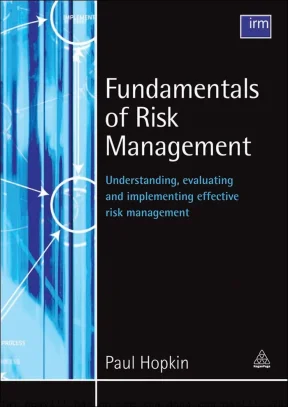I. Tổng Quan Về Quản Lý Rủi Ro Khái Niệm Cơ Bản
Quản lý rủi ro là một quá trình quan trọng trong mọi tổ chức, từ doanh nghiệp đến cơ quan chính phủ. Nó bao gồm việc xác định, đánh giá và kiểm soát các rủi ro có thể ảnh hưởng đến mục tiêu của tổ chức. Việc hiểu rõ về quản lý rủi ro giúp các nhà quản lý đưa ra quyết định thông minh hơn và bảo vệ tài sản của tổ chức.
1.1. Định Nghĩa Quản Lý Rủi Ro
Quản lý rủi ro được định nghĩa là quá trình nhận diện, đánh giá và ưu tiên các rủi ro, sau đó áp dụng các nguồn lực để giảm thiểu, theo dõi và kiểm soát khả năng xảy ra của các rủi ro đó.
1.2. Tầm Quan Trọng Của Quản Lý Rủi Ro
Quản lý rủi ro không chỉ giúp bảo vệ tài sản mà còn tạo ra cơ hội cho tổ chức phát triển. Nó giúp tổ chức duy trì sự ổn định và tăng cường khả năng cạnh tranh trên thị trường.
II. Các Thách Thức Trong Quản Lý Rủi Ro Hiện Nay
Trong bối cảnh kinh doanh ngày càng phức tạp, các tổ chức phải đối mặt với nhiều thách thức trong việc quản lý rủi ro. Những thách thức này bao gồm sự thay đổi nhanh chóng của công nghệ, biến động của thị trường và các quy định pháp lý ngày càng nghiêm ngặt.
2.1. Rủi Ro Từ Công Nghệ
Sự phát triển nhanh chóng của công nghệ thông tin đã tạo ra nhiều rủi ro mới, bao gồm rủi ro về bảo mật thông tin và rủi ro từ các hệ thống tự động hóa.
2.2. Rủi Ro Từ Thị Trường
Biến động của thị trường có thể ảnh hưởng lớn đến hoạt động kinh doanh. Các tổ chức cần phải có chiến lược để đối phó với những thay đổi này nhằm bảo vệ lợi nhuận.
III. Phương Pháp Đánh Giá Rủi Ro Hiệu Quả
Đánh giá rủi ro là bước quan trọng trong quy trình quản lý rủi ro. Các phương pháp đánh giá rủi ro giúp tổ chức xác định mức độ nghiêm trọng của các rủi ro và đưa ra các biện pháp ứng phó phù hợp.
3.1. Phân Tích Rủi Ro
Phân tích rủi ro bao gồm việc xác định khả năng xảy ra và tác động của các rủi ro. Các công cụ như ma trận rủi ro có thể được sử dụng để hỗ trợ trong quá trình này.
3.2. Đánh Giá Rủi Ro Tài Chính
Rủi ro tài chính là một trong những loại rủi ro quan trọng nhất mà các tổ chức phải đối mặt. Việc đánh giá rủi ro tài chính giúp tổ chức quản lý tốt hơn các nguồn lực tài chính của mình.
IV. Triển Khai Quản Lý Rủi Ro Trong Doanh Nghiệp
Triển khai quản lý rủi ro là một quá trình liên tục và cần sự tham gia của tất cả các cấp trong tổ chức. Việc xây dựng một văn hóa quản lý rủi ro mạnh mẽ sẽ giúp tổ chức ứng phó tốt hơn với các rủi ro.
4.1. Xây Dựng Chính Sách Quản Lý Rủi Ro
Chính sách quản lý rủi ro cần được xây dựng rõ ràng và cụ thể, xác định các mục tiêu và quy trình cần thiết để quản lý rủi ro hiệu quả.
4.2. Đào Tạo Nhân Viên Về Quản Lý Rủi Ro
Đào tạo nhân viên về quản lý rủi ro là rất quan trọng. Nhân viên cần hiểu rõ về các rủi ro mà tổ chức phải đối mặt và cách thức ứng phó với chúng.
V. Ứng Dụng Thực Tiễn Của Quản Lý Rủi Ro
Quản lý rủi ro không chỉ là lý thuyết mà còn có nhiều ứng dụng thực tiễn trong các lĩnh vực khác nhau. Các tổ chức có thể áp dụng các phương pháp quản lý rủi ro để cải thiện hiệu quả hoạt động.
5.1. Quản Lý Rủi Ro Trong Dự Án
Quản lý rủi ro trong dự án giúp đảm bảo rằng các dự án được thực hiện đúng tiến độ và trong ngân sách. Việc xác định và quản lý rủi ro trong dự án là rất cần thiết.
5.2. Quản Lý Rủi Ro Trong Hoạt Động Kinh Doanh
Quản lý rủi ro trong hoạt động kinh doanh giúp tổ chức duy trì sự ổn định và phát triển bền vững. Các biện pháp quản lý rủi ro cần được tích hợp vào các quy trình kinh doanh hàng ngày.
VI. Kết Luận Tương Lai Của Quản Lý Rủi Ro
Quản lý rủi ro sẽ tiếp tục đóng vai trò quan trọng trong sự phát triển của các tổ chức. Với sự thay đổi không ngừng của môi trường kinh doanh, việc áp dụng các phương pháp quản lý rủi ro hiệu quả sẽ giúp tổ chức vượt qua thách thức và nắm bắt cơ hội.
6.1. Xu Hướng Mới Trong Quản Lý Rủi Ro
Các xu hướng mới trong quản lý rủi ro bao gồm việc sử dụng công nghệ thông tin và phân tích dữ liệu để cải thiện quy trình quản lý rủi ro.
6.2. Tầm Quan Trọng Của Quản Lý Rủi Ro Trong Tương Lai
Quản lý rủi ro sẽ trở thành một phần không thể thiếu trong chiến lược phát triển của các tổ chức, giúp họ ứng phó tốt hơn với những thay đổi và bất ổn trong môi trường kinh doanh.
